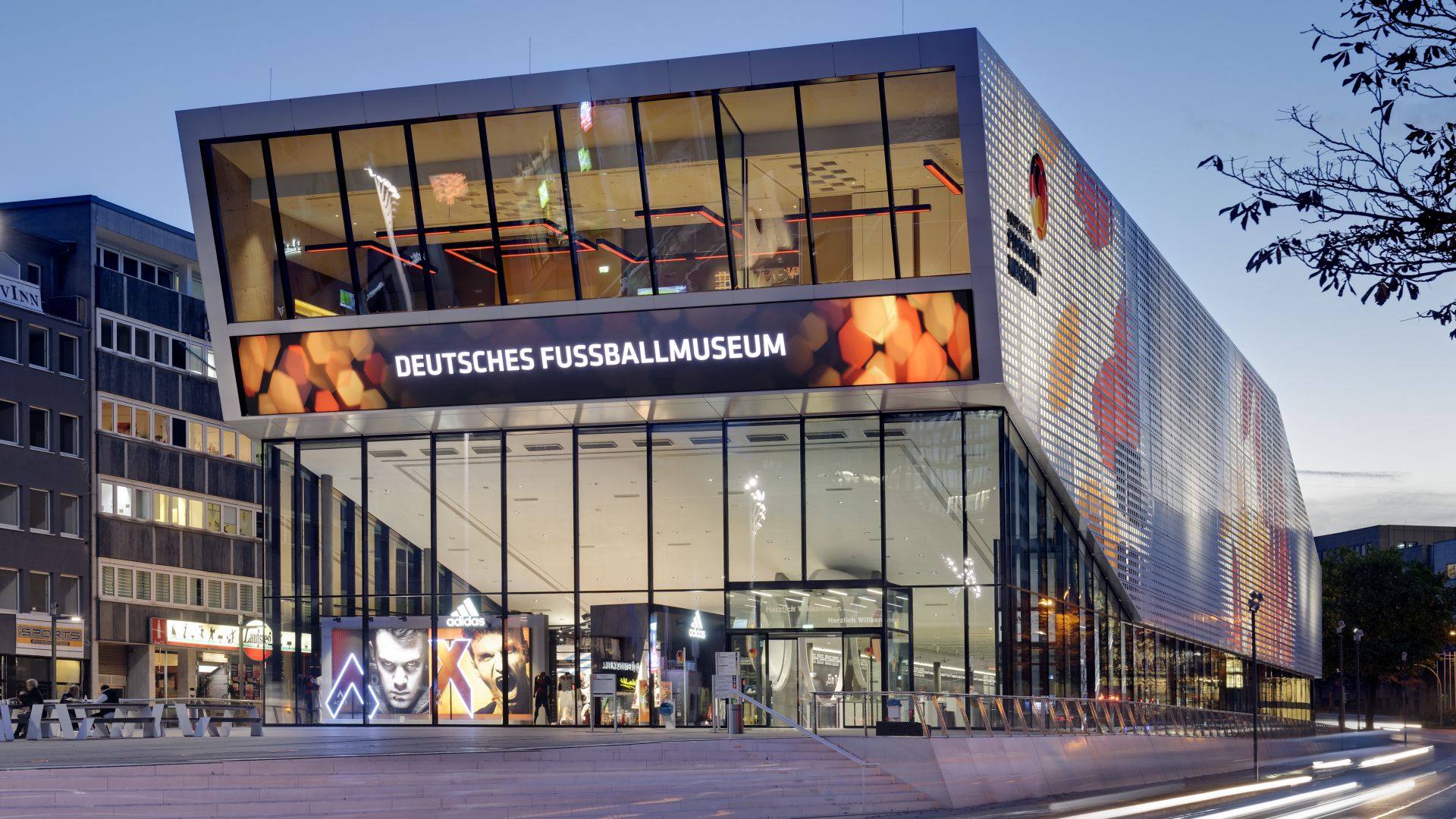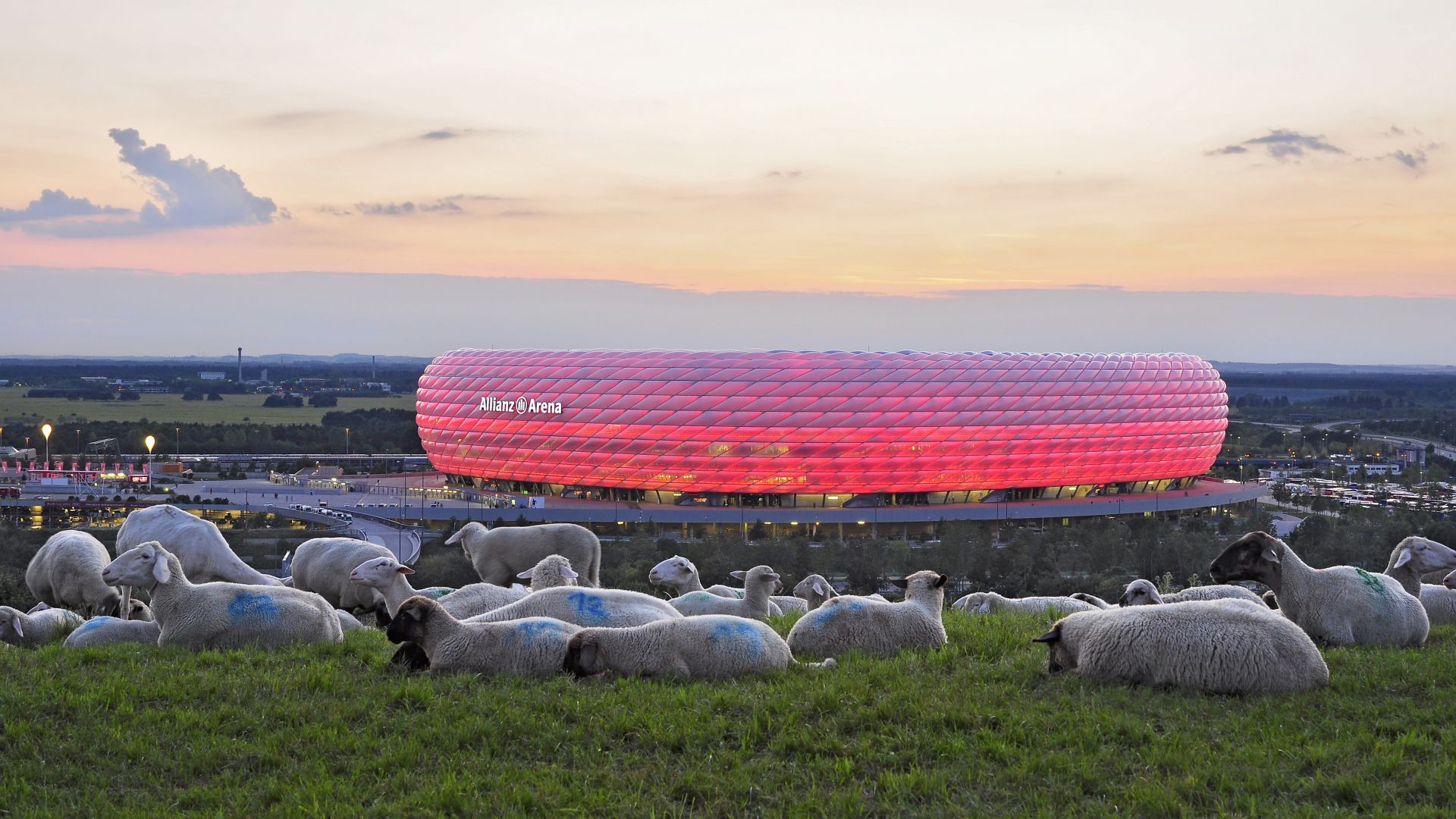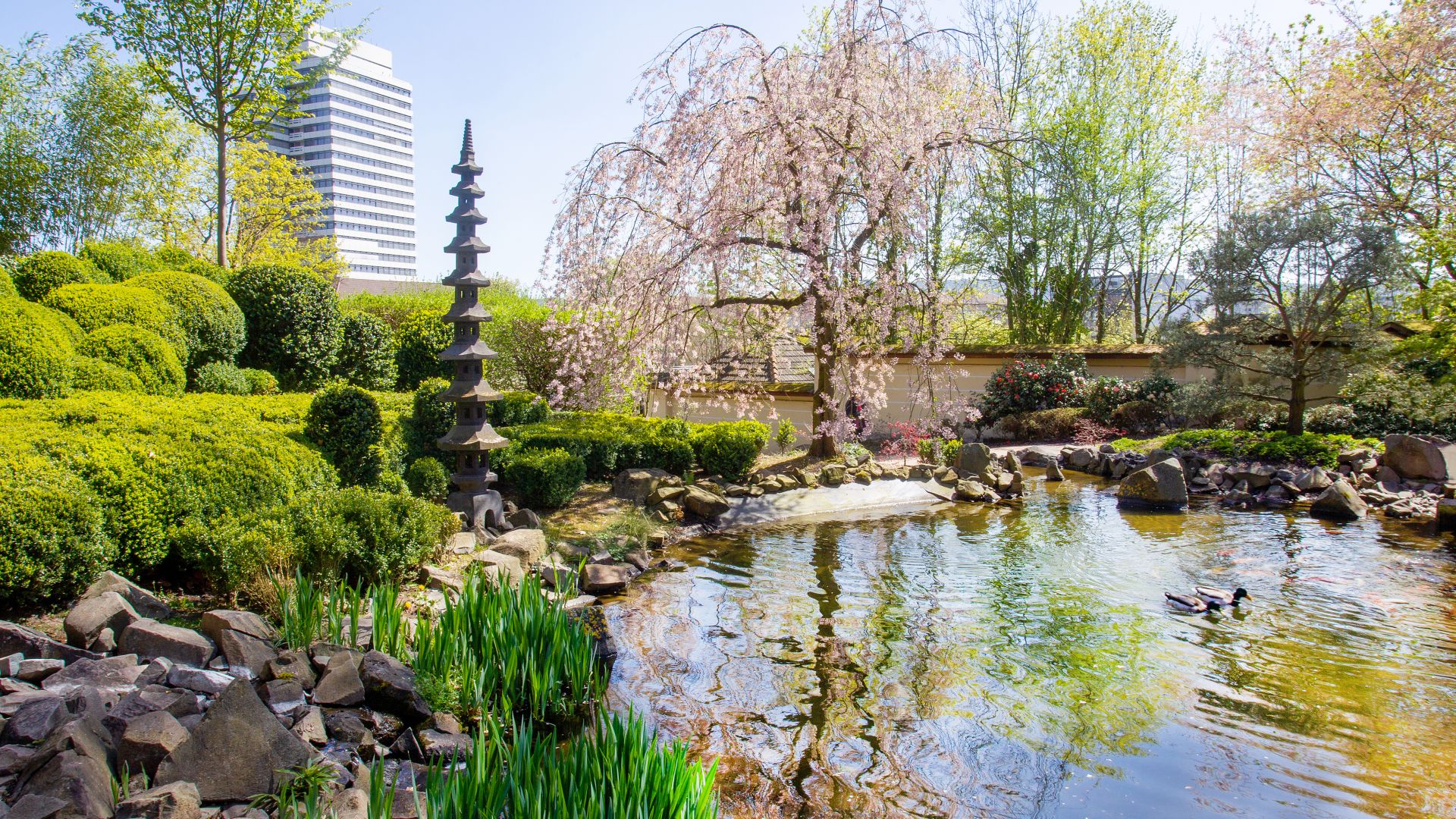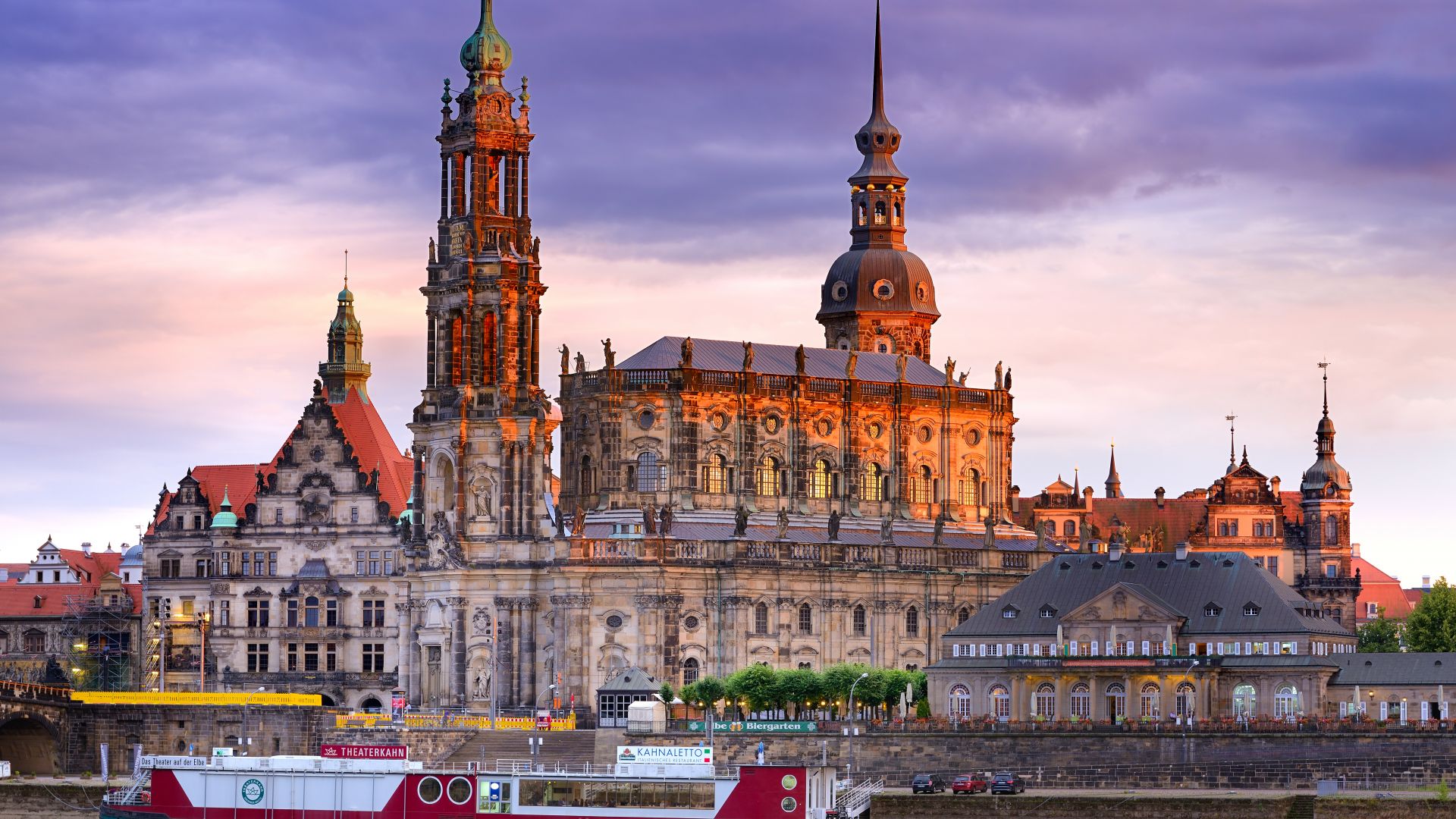Cities & Culture
Football hotspots: cities with an extra kick
For many, football is the best pastime in the world – and a visit to a sensational match or stadium may even be the reason for a trip. Tip: it's best to schedule in some "post-match time" for culture and adventures beyond the pitch!
Gelsenkirchen & Dortmund: tradition and emotion
 Dortmund: German Football Museum
©DZT (Mark Wohlrab Fotodesign)
Dortmund: German Football Museum
©DZT (Mark Wohlrab Fotodesign)
The most Bundesliga clubs, the oldest clubs, and the most emotional derbies: nowhere in Germany does football play such a big role as it does in the Ruhr region – and has done for generations. Because in 1896, the Duisburg Spieleverein became the first German team to play in England. As a result, more and more associations were founded, also from the mining community, with increasing success. Above all, Schalke 04 inspired the area, as well as heroes like Erich Kuzorra, who became German champion six times in the 1930s with the "Knappen" (literally: "The Miners") from Gelsenkirchen. Visitors to the Schalke Museum can learn about these and other successes in the "VELTINS-Arena", which has a convertible roof and huge video cube. Whether in the museum, on the street, in the pubs and especially in the stadium, there's one hot topic: the rivalry with Borussia Dortmund. Their stadium, Signal Iduna Park, is Germany's largest stadium, with over 81,000 seats, and often turns into chaos at the best of times, but when they play rivals Schalke 04, the "yellow wall" really seems to explode. A more respectful mood prevails in the German Football Museum. Over here trophies, over there Bierhoff's "Golden Goal" kit from 1996, and the boot with which Götze scored the World Cup final goal in 2014. Which devotional objects will be added after the home Euro 2024? Dortmund and Gelsenkirchen are firmly set as host cities in any case...
Munich: top of the stadium league
 Munich: Allianz Arena, sheep in foreground
©DZT (Jörg Lutz Fotodesign)
Munich: Allianz Arena, sheep in foreground
©DZT (Jörg Lutz Fotodesign)
Like a giant car tyre and lit up in red, white or rainbow colours (as at Euro 2020), 2,784 transparent inflated plastic panels cover the Allianz Arena, which stands imposing next to the motorway. As impressive as the world's largest membrane shell looks from the outside, the inside is just as spectacular. After the darkness of the interconnecting corridors, if you suddenly look down on the bright green pitch lying below you and the steep tiered seating, you might get goose bumps. This effect is multiplied at home matches of FC Bayern Munich, who are record champions and became Champions League winners yet again, only in 2020 – it's no wonder the 75,000 seats are almost always sold out. One reason: no other club in the world has as many registered fans as the FCB. Another record is the FC Bayern Erlebniswelt (FC Bayern World) located in the arena. Germany's largest club museum invites you to take a walk through football history. One milestone should be visited in person, however: the architecturally-outstanding Olympic Stadium, where Beckenbauer and team won the World Cup in 1974.
Kaiserslautern: Red Devils, many dinos
 Kaiserslautern: Japanese Garden
©Adobe Stock (Marat Lala)
Kaiserslautern: Japanese Garden
©Adobe Stock (Marat Lala)
No Lauter football fan will ever forget the season of 1997/98. After all, that was when the rising stars of 1. FC Kaiserlautern became German champions at their first attempt! The "Miracle of the Betze" shone a spotlight on the club and the city. There was already a connection to another football miracle: Bern. Fritz Walter, captain of the 1954 World Cup winning team, played for years in the stadium on the Betzenberg, which has long since borne his name. It was also rebuilt for the home World Cup in 2006. Since then, the rather tame "Red Devils" have been hoping for miracles again. Until we see these on the pitch, it is worth checking out another green space, for example the Japanese Garden, one of the largest of its kind in Europe. The garden show located in the city centre is also pretty, and houses the most extensive dinosaur exhibition in Europe. The Kaiserbrunnen provides a glimpse into the city's history. The main figures of this bronze landmark are Emperor Frederick Barbarossa and King Rudolf of Habsburg, but other symbols are an Opel engine and a (Pfaff) sewing machine, as well as symbols of the Technical University. And a football signed by Fritz Walter.
Dresden: chanting fans near the Old Town
 Dresden: Elbe river bank with court church in the evening glow
©DZT (Francesco Carovillano)
Dresden: Elbe river bank with court church in the evening glow
©DZT (Francesco Carovillano)
Hans-Jürgen "Dixie" Dörner was regarded as the "Beckenbauer of the East". He played 100 international matches for the GDR national team and won Olympic gold in 1976. He even made a staggering 392 appearances for his club, Dynamo Dresden. Even if the club's great successes, including winning the GDR championship eight times, are already old news, the fans still stand by Dynamo Dresden in the 2nd Bundesliga. Anyone can see – and hear – that at every home game. Especially during local derbies, up to 32,000 fans dressed in black and yellow turn the Rudolf-Harbig-Stadion, newly built in 2009, into pandemonium. The shape of the stadium contributes to the intense atmosphere, as it is the steepest and, alongside Aachen's Tivoli, the largest single-seat stadium in Germany. If things don't go to plan at the match, leave early to go the neighbouring zoo or the Dresden Grand Garden, for example. It's only a few minutes' more walk until you reach the Altstadt (Old Town) with its top-class sights, such as the Frauenkirche, the Zwinger and the Semper Opera House. If you would prefer other refreshments after a match, you can find small shops and plenty of cafés and pubs nestled in the smallest of spaces in the outer Neustadt (New Town).